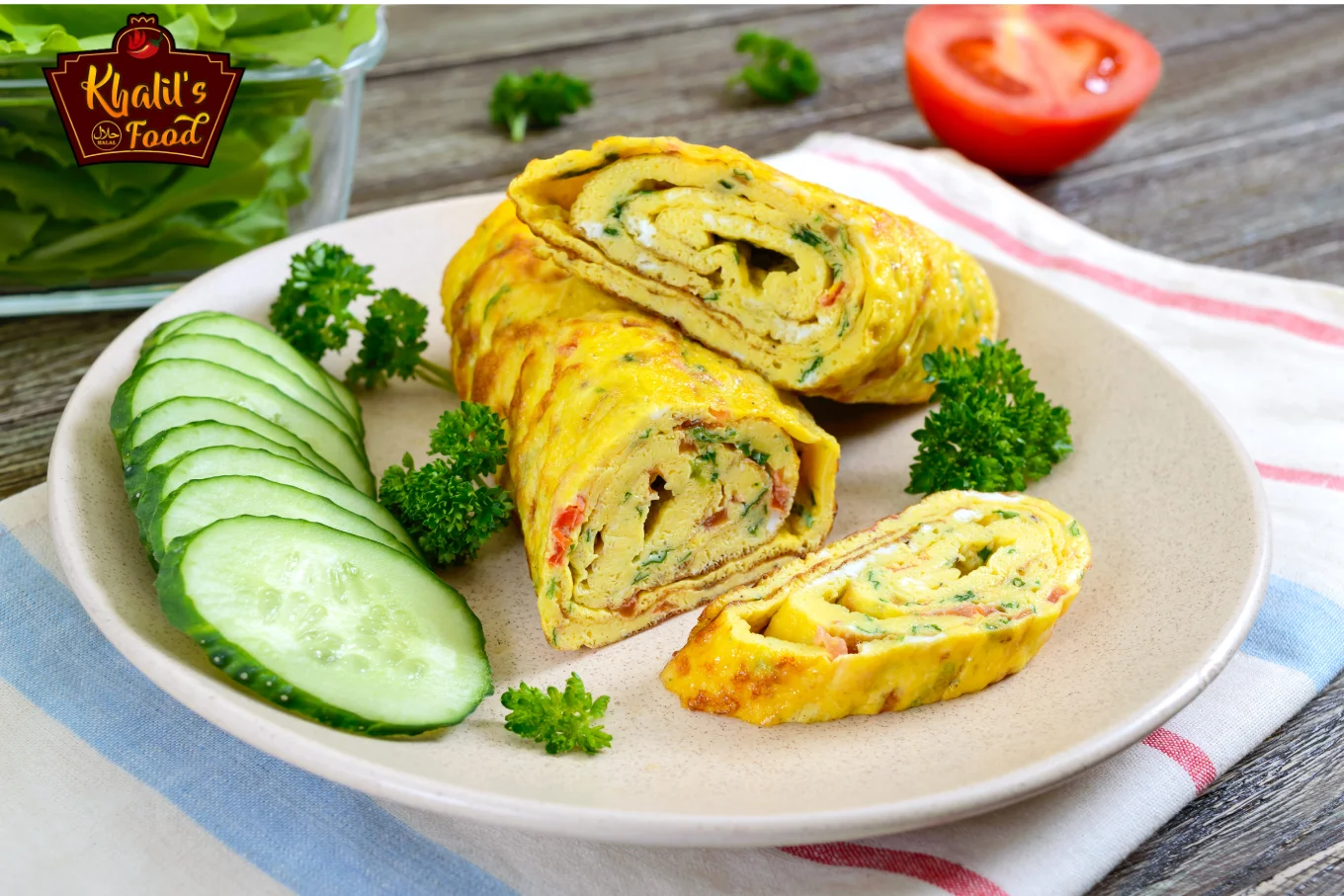Vegetable Egg Roll Nutrition is important to understand if you want to enjoy this popular appetizer without surprises. They are crispy on the outside, filled with tasty vegetables on the inside, and go well with many meals. But if you are curious about what’s really inside a vegetable egg roll — especially how many calories, carbs, and nutrients it has — this article breaks it down for you in simple terms. You’ll learn how these rolls affect your health and what to watch out for.
What Is a Vegetable Egg Roll?
A vegetable egg roll is a snack made by wrapping chopped vegetables in a thin dough wrapper, then cooking it until crispy. Common veggies inside include cabbage, carrots, and bean sprouts. The wrapper is usually made from flour, water, and eggs, which gives it a crunchy texture when fried or baked.
Unlike spring rolls, which are lighter and wrapped in rice paper, egg rolls have a thicker, wheat-based wrapper. Vegetable egg rolls are popular for people who want a meat-free option that still tastes great.
Typical Serving Size of a Vegetable Egg Roll
Usually, one vegetable egg roll weighs about 80 to 120 grams. Restaurants may serve slightly bigger or smaller sizes, but this is a good average. Nutrition information is usually given per one roll, so if you eat more than one, remember to multiply the numbers accordingly.
Calories in a Vegetable Egg Roll
A single vegetable egg roll typically has between 150 and 200 calories. For a detailed breakdown, see our article on Vegetable Egg Roll Calories. Most of these calories come from the wrapper and the oil used during cooking. If the egg roll is deep-fried, it will have more calories because it soaks up oil.
If you bake or air fry the rolls instead of frying them, the calories go down because less oil is used. The vegetables inside add very few calories compared to the wrapper and oil.
Carbohydrate Content in Vegetable Egg Rolls
One vegetable egg roll usually contains about 15 to 20 grams of carbohydrates. The carbs come mostly from the flour wrapper. The vegetables inside have a small amount of natural sugar and fiber, but the wrapper is the main source of carbs.
If you follow a low-carb diet, you might want to eat vegetable egg rolls in moderation since the carbs can add up quickly, especially if you have more than one or eat them with rice or noodles.
Protein Content in Vegetable Egg Rolls
Vegetable egg rolls aren’t a big source of protein, but they do contain some. The eggs in the wrapper and any soy sauce used can add about 3 to 5 grams of protein per roll.
While it’s not much, the protein can add up if you eat other protein-rich foods with your meal. For vegetarians, vegetable egg rolls can be a nice side dish but should not replace main protein sources.
Fat Content: Types and Amounts
The fat in vegetable egg rolls depends on how they are cooked. Deep-fried egg rolls usually have about 8 to 12 grams of fat because they absorb oil while cooking. This includes some saturated fat, which is less healthy in large amounts.
If you bake or air fry the rolls, the fat drops to around 3 to 5 grams since less oil is used. The type of oil also matters—healthier oils like olive oil have better fats for your heart compared to some vegetable oils.
Fiber Content in Vegetable Egg Rolls
Fiber is good for digestion and feeling full. Vegetable egg rolls have a small amount of fiber, usually about 1 to 2 grams per roll. This comes from the vegetables like cabbage and carrots inside.
Although the fiber amount is low, every bit helps. It’s better to eat vegetable egg rolls with other fiber-rich foods like salads or steamed veggies for a well-rounded meal.
Vegetable Egg Roll Nutrition: Vitamins and Minerals Explained
The vegetables inside provide small amounts of vitamins and minerals. For example, cabbage and carrots add vitamin A and vitamin C, which support your immune system and skin health.
Bean sprouts bring some iron and folate too. But since you usually eat just one or two egg rolls, they only contribute a small portion of your daily vitamin and mineral needs.
Are Vegetable Egg Rolls Healthy?
Vegetable egg rolls can be healthy or less healthy depending on how they’re made and how many you eat. They have vegetables, which is good, and they are meat-free, so they fit vegetarian diets.
But deep-fried egg rolls have more calories, fat, and sometimes a lot of salt. Eating too many fried foods can be bad for your heart and weight.
If you bake or air fry vegetable egg rolls and eat them in moderation, they can be a tasty, healthy snack or appetizer.
Impact of Cooking Methods on Nutrition
How you cook vegetable egg rolls changes how healthy they are. Deep-frying adds oil and fat, making them less healthy and higher in calories.
Baking or air frying uses little or no oil but still makes the wrapper crispy. This way, you keep the taste but cut down on unhealthy fats.
For a healthier option, try baking or air frying your vegetable egg rolls instead of frying.
Vegetable Egg Rolls and Weight Management
If you want to keep your weight steady, you don’t have to avoid vegetable egg rolls completely. Just be careful about how many you eat and how they’re cooked.
Deep-fried rolls have more calories and fat, so they can add up fast if you eat a lot. Baked or air-fried rolls are lower in calories and better if you want to enjoy them often.
Pair your egg rolls with a salad or steamed vegetables instead of rice or fried foods to keep meals balanced.
Common Ingredients to Watch Out For
Some store-bought or restaurant vegetable egg rolls have ingredients that might not be great for you. The wrappers can have preservatives and extra salt. Sauces served with egg rolls often have sugar and more salt.
Sometimes, MSG or artificial flavor enhancers are added, which some people prefer to avoid.
To stay healthy, check ingredient lists when buying or choose homemade recipes where you control everything.
Homemade vs Store-Bought Vegetable Egg Rolls: Nutrition Comparison
Making vegetable egg rolls at home lets you pick fresh vegetables and use less salt and oil. Baking or air frying at home helps keep fat low too.
Store-bought or restaurant egg rolls are usually fried and may have more calories, fat, and salt to improve taste and shelf life.
If you want the healthiest option, homemade rolls are the best choice.
For a tasty spring roll variation, try our Homemade Chicken Spring Rolls recipe.
Frequently Asked Questions (FAQs)
How many calories are in a vegetable egg roll?
About 150 to 200 calories per roll, depending on size and cooking method.
Are vegetable egg rolls gluten-free?
Usually not, because the wrappers are made from wheat flour which contains gluten.
Can vegetable egg rolls be part of a low-carb diet?
They have 15-20 grams of carbs per roll, so they may not fit well into strict low-carb plans.
Are vegetable egg rolls vegan?
Traditional wrappers have eggs, so they aren’t vegan unless you use special vegan wrappers.
How can I make vegetable egg rolls healthier?
Use lots of fresh vegetables, bake or air fry instead of deep-frying, and choose low-sodium sauces.
Conclusion: Should You Include Vegetable Egg Rolls in Your Diet?
Vegetable egg rolls are a crunchy, tasty snack filled with vegetables. They provide moderate calories, some carbs, fat, and a little protein, fiber, vitamins, and minerals.
Eating them occasionally is fine, especially if you bake or air fry them instead of deep-frying. Homemade rolls give you more control over ingredients and nutrition.
Enjoy vegetable egg rolls as part of a balanced diet, and pair them with healthy sides for the best results.
If you want more simple, healthy recipes and food tips, keep visiting Khalil’s Food for fresh ideas and helpful advice!

